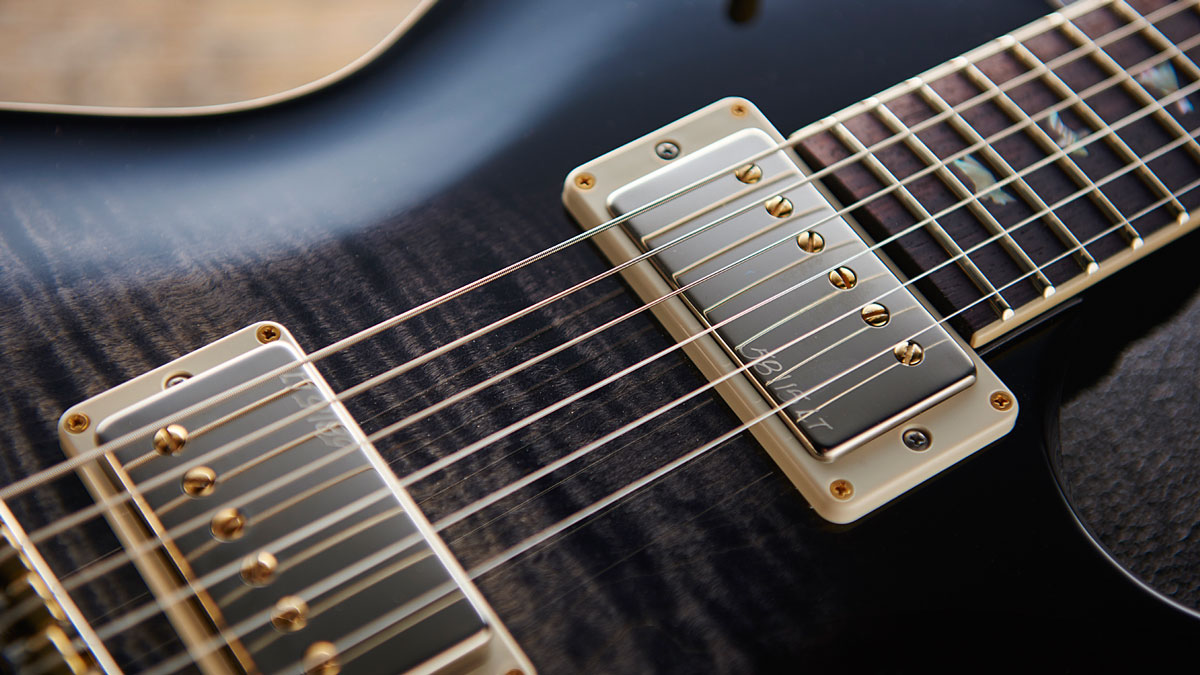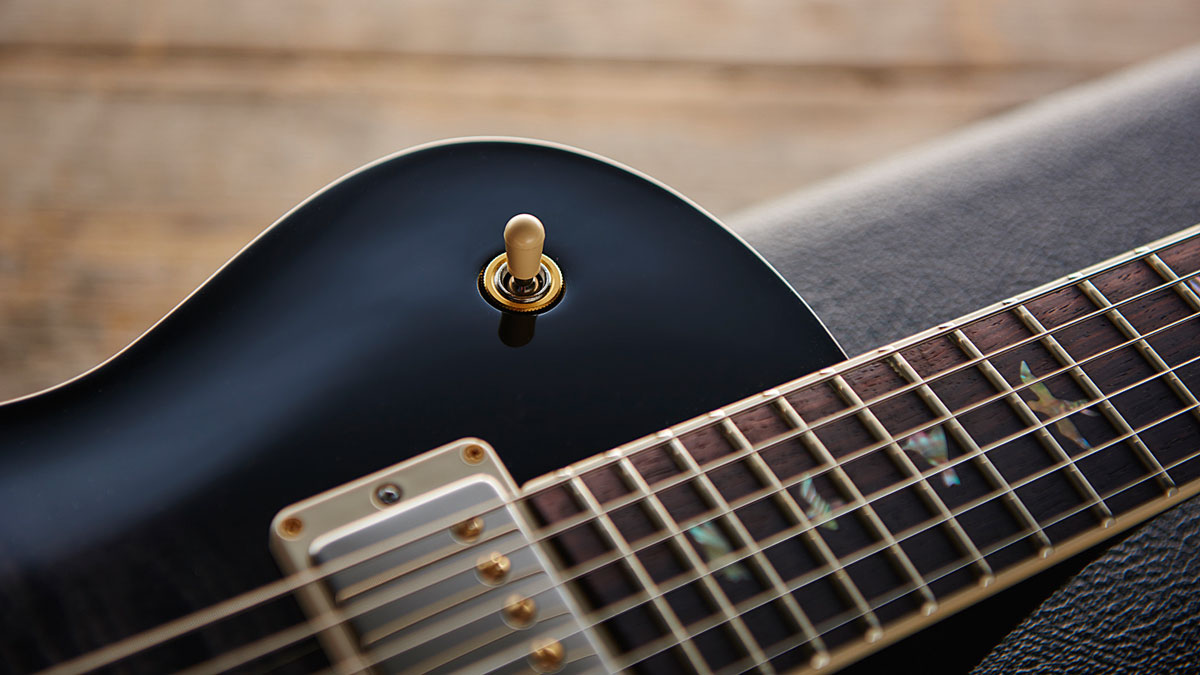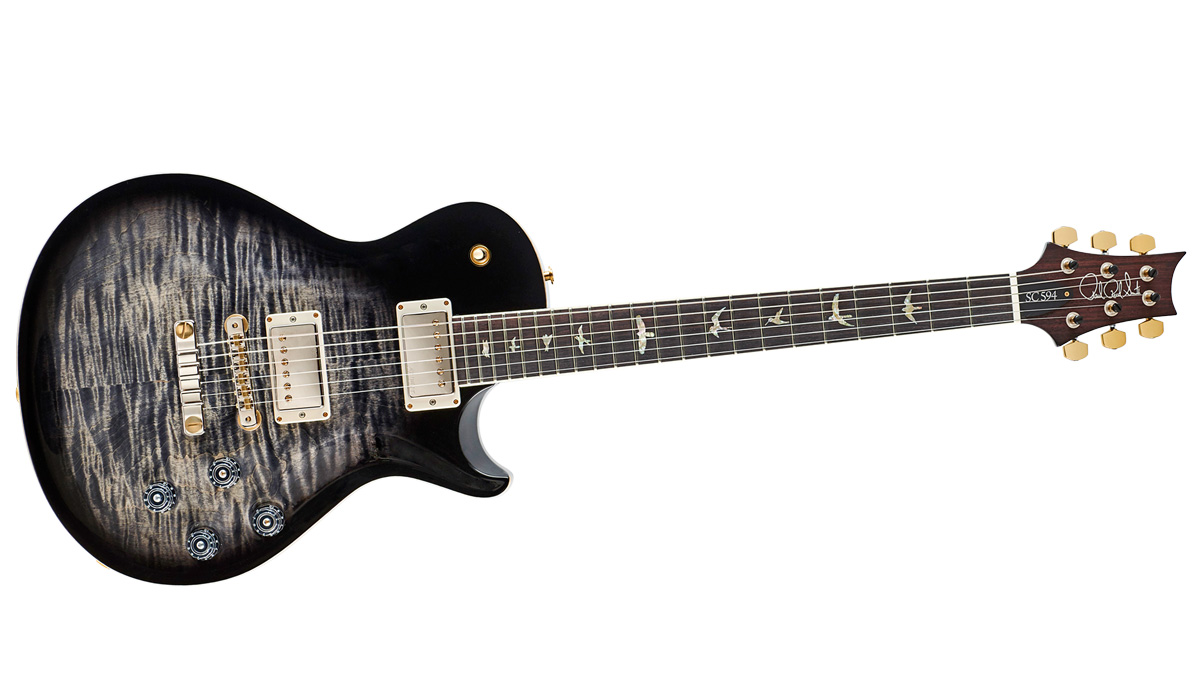MusicRadar Verdict
We guarantee that the monetary investment in this PRS will be rewarded with tone, playability and jealous gazes aplenty!
Pros
- +
Stunning build.
- +
Amazing vintage tones.
- +
A brilliant 21st century take on a classic 50s icon.
Cons
- -
Single-cutaway design compromises upper-fret access, but is that really a problem?
MusicRadar's got your back
When we reviewed the McCarty 594 double-cut, we said it focused on “a desire to recreate the ‘holy grail’ of vintage Gibson tone: a 1959 Sunburst, but in a modern double-cut guitar”.
Paul Reed Smith underlined the point, adding that it was “a way of getting someone who grew up in that world to be very, very happy”.
All who played that guitar were captivated: it was the finest PRS we could recall in a while. So can a new ‘full-fat’ version - originally developed by the PRS Private Stock team and released as the November 2016 Guitar Of The Month - possibly be better?
Sure, it’s closer to its esteemed Gibson forbear in this single-cut form, but will a few extra millimetres of timber make that much difference? To find out, we borrowed our old mate Bernie Marsden’s guitar for review, since it was one of only two single-cut McCarty SC 594s in the UK at the time.


With a Charcoal Burst ‘10’ top and black back, sides and neck, it’s a real looker, and as such, removes this particular SC 594 from obvious ’59 ’burst comparisons. A quality control check reveals perfection in every aspect of build, fit and finish.
As mentioned in our previous 594 review, that guitar’s body is a tad thicker than a regular McCarty, and the maple-to-mahogany ratio has been ‘tuned’ with a bit more mahogany and a bit less maple to provide a more authentic vintage balance across the sonic spectrum. It’s the same deal here, although the body thickness expands from 55.5mm of the 594 to a very Les Paul-like girth of 57mm.
PRS has finally seen fit to revert - on both these 594 models, at least - to the classic Gibson control layout with the neck humbucker’s controls uppermost, and the bridge’s towards the floor. Smith originally rotated it so they were fore and aft; this has its own logic, but defies 70 years of convention.
Pickups and hardware are as on the double-cut version: a pair of 58/15LT humbuckers with two volume and two tone controls, plus a partial coil-split on both. The ‘LT’ suffix stands for ‘Low Turns’, meaning these are at the cooler end of the humbucking power spectrum and should be more tonesome and dynamic as a result.
Hardware is two-tone nickel and gold in colour (and comes with any ‘10’ top model like this) and looks like it’s been fashioned by a top-class jeweller; the bridge is cast zinc with an aluminium tailpiece, while the thumb-wheels and studs are brass. The Phase III locking tuners have a set screw that binds the cog and worm together for better tone transmission to the headstock - Smith says it makes all the difference.
Sounds
The SC 594’s Vintage Pattern profile neck, slightly deeper than the standard Pattern profile, is a good palm-full, but suits the guitar’s vintage nature perfectly. PRS’s drag-free finish means it’s a fast player despite the extra mass, while the rosewood ’board’s perfect playing area gives chords, licks and bends a clean and effortless feel. Typical ’59-style frets - not too fat, not too tall - plus an almost imperceptible asymmetrical carve, contribute to a very grown-up playing experience.
Regarding single-cut versus double-cut playability, however, the extra shoulder mass of single-cut-style guitars such as this means your thumb can’t get past the 16th fret, making top-end licks something of a compromise (not that it inhibited Gary Moore, Jimmy Page, Slash et al).
Using a Gibson Les Paul Custom ‘True Vintage’ for comparison, the difference between the two instruments is marked. Through our Marshall Mini Jubilee combo, the Les Paul sounds darker and more in-your-face, yet less dynamic overall.
Hardware is two-tone nickel and gold in colour, and looks like it’s been fashioned by a top-class jeweller.
By comparison, the SC 594 is a more spritely affair - brighter and clearer, and because of that, it’s more versatile, even before the coil-splits kick in. The Les Paul prefers it flat-out all the time, but the SC 594 is happy with the controls set anywhere. With the Marshall’s lead channel selected, the tone is sweet and singing on either or both pickups, but turn down and things clean up to the point where you really could run a gig from the guitar’s volumes alone.
We mentioned in our Patrick James Eggle 96 review that tapped or split humbuckers can sometimes sound anything but ‘single coil’, but here, just like that Eggle, our SC 594 bucks that trend. It makes it an exceptionally versatile instrument and we can’t think of a situation in which it would falter - anything from funk to death metal!
Tweaks to pickups, hardware and playability made the double-cut McCarty 594 a triumph of the guitar-builder’s art, so a version based on the company’s Singlecut was inevitable. We’ve seen how it fares against a Les Paul, but what about comparison to its own sibling?
Sonically, it’s a close call. Does the extra timber add a bit more grunt? Possibly, but in the heat of battle you’d be hard pressed to tell. Looks-wise, beauty will always be in the eye of the beholder, but PRS’s modern twist on a classic design is a classy affair. And playability? Well, up to the 16th fret there’s nothing in it, but, of course, ‘dusty end’ access is never as good with that shoulder in the way, so here the double-cut takes it.
Of course, such a points win will mean nothing to those for whom this style of guitar is the only way. The hefty price tag is unlikely to deter them, either. And why should it? The SC 594 is anywhere from £2,000 to £5,000 less than a Gibson Les Paul ’59 True Historic, which makes it look decidedly cheap - even though, of course, there’s nothing cheap about this guitar. We really can’t praise these instruments highly enough.
“Every one of them said yes without hesitation": Hank Marvin and Roger Taylor have just remade a '60s classic for charity
Do you know where your money goes when you buy a gig ticket? A new report breaks it down
“Every note counts and fits perfectly”: Kirk Hammett names his best Metallica solo – and no, it’s not One or Master Of Puppets










